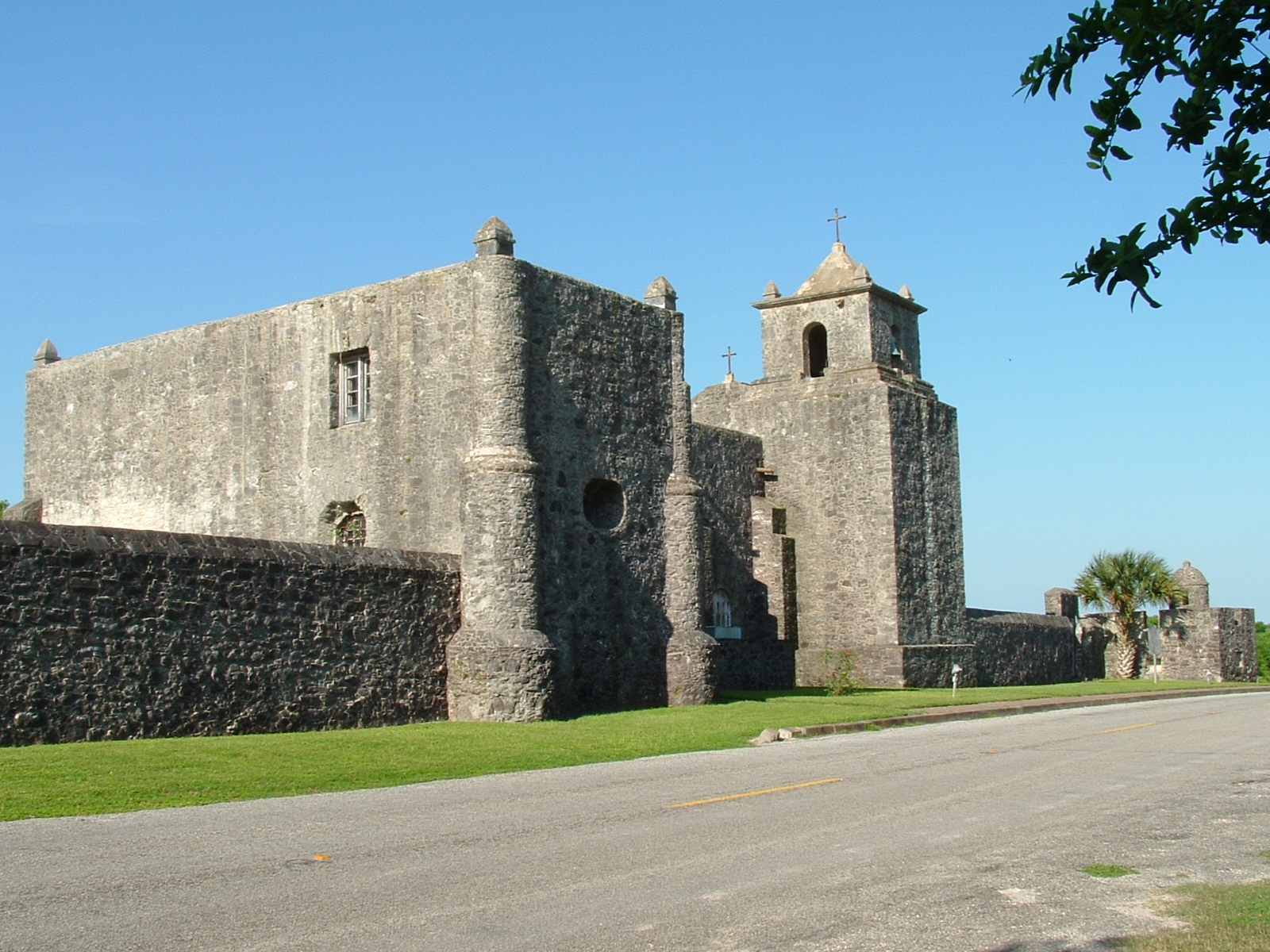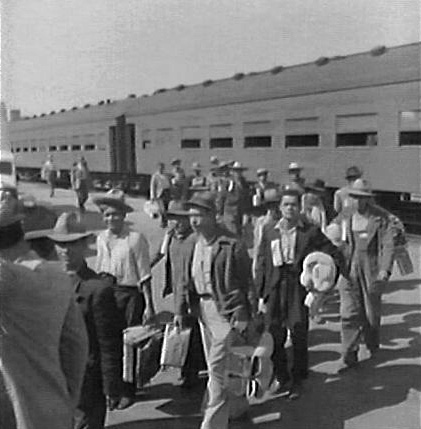 |
| Percentage of Hispanic or Latino population by county in 2010 census. By United States Census Bureau [Public domain], via Wikimedia Commons. |
Timeline of Hispanic-American History
Click on the links below to find relevant library resources on each topic.
Click on the links below to find relevant library resources on each topic.
1528 – 1536: Alvar
Núñez Cabeza de Vaca survived an
ill-fated expedition and explored portions of Texas. His book was the first
written account of Texas Indians.
1539 – 1542: Hernando de Soto explored Southeast
US including portions of Florida, Georgia, South Carolina, North Carolina,
Tennessee, Alabama, and Mississippi. The
Hernando de Soto Expedition by Jerald T. Milanich. Francisco Vásquez de Coronado explored
Southwest US including portions of Arizona, New Mexico, Texas, Oklahoma, and
Kansas. Documents
of the Coronado Expedition, 1539 – 1542 by Richard and Shirley Cushing Flint.
1718: Spanish
colonists founded San Antonio, Texas.
· Spanish
Texas, 1519 – 1821 by
Donald E. Chipman
1748 - 1755: José de Escandón led the Spanish colonization
of Nuevo Santander (which today
includes the Mexican state of Tamaulipas and portions of southern Texas).
He established several settlements in the region including Laredo, TX.
· De
León: a Tejano Family History by
A. Carolina Castillo Crimm
Notable Men and Women of Spanish Texas by Donald E. Chipman and Harriet Denise Joseph
Notable Men and Women of Spanish Texas by Donald E. Chipman and Harriet Denise Joseph
 |
| Presidio La Bahía near Goliad, TX. Originally built by the Spanish in 1721, and later rebuilt in 1771. Photo by Ernest Mettendorf - Public Domain, https://commons.wikimedia.org/w/index.php?curid=4208460 |
1769 – 1819: Spain
established multiple settlements in California including San Diego (1769), San
Francisco (1776), and Los Angeles (1781).
· A
History of California: the Spanish Period by Charles E. Chapman
1821: United
States purchased Florida from Spain.
· Diplomacy
and the Borderlands: the Adams-Onís Treaty of 1819 by Philip Coolidge Brooks
Mexico won independence from
Spain.
· The
Hidalgo Revolt: Prelude to Mexican Independence by Hugh M. Hamill
1822: Joseph
Marion Hernández became first Hispanic to serve in the US Congress. He
was a delegate from the Florida Territory.
1836: Texas
declared independence from Mexico.
· Remember
the Alamo: Texians, Tejanos, and Mexicans Tell Their Stories by Paul Robert Walker
· Tejanos
and Texas under the Mexican Flag, 1821 – 1836 by Andrés Tijerina
A Revolution Remembered: The Memoirs and Selected Correspondence of Juan N. Seguín by Jesús F. de la Teja
A Revolution Remembered: The Memoirs and Selected Correspondence of Juan N. Seguín by Jesús F. de la Teja
1845: United
States annexed Texas.
· The
Annexation of Texas by
Justin Harvey Smith
1848: Treaty of Guadalupe Hidalgo ended
the Mexican-American War. Mexico ceded territory to US including: California,
Arizona, New Mexico, Nevada, Utah, and portions of Colorado, Kansas, Oklahoma,
and Wyoming.
The Border Crossed Us: Rhetorics of Borders, Citizenship, and Latino/a Identity by Josue David Cisneros.
The Border Crossed Us: Rhetorics of Borders, Citizenship, and Latino/a Identity by Josue David Cisneros.
· Border
Visions: Mexican Cultures of the Southwest United States by Carlos G. Vélez-Ibañez
· The
Treaty of Guadalupe Hidalgo: a Legacy of Conflict by Richard Griswold del Castillo
1859: Juan Cortina seized control of
Brownsville, TX in retaliation for town marshal’s assault on one of his
employees.
· Cortina:
Defending the Mexican Name in Texas by Jerry D. Thompson
· Juan
N. Cortina: Two Interpretations by Charles William Goldfinch
1875: Romualdo Pacheco became the first Hispanic governor of a US state (California).
1877: A white mob killed approximately 40 Mexican-Americans in Nueces County, Texas.
Forgotten Dead: Mob Violence against Mexicans in the United States, 1848-1928 by William D. Carrigan and Clive Webb.
1875: Romualdo Pacheco became the first Hispanic governor of a US state (California).
1877: A white mob killed approximately 40 Mexican-Americans in Nueces County, Texas.
Forgotten Dead: Mob Violence against Mexicans in the United States, 1848-1928 by William D. Carrigan and Clive Webb.
1889: The Herrera brothers (Pablo,
Nicanor, and Juan Jose) formed a resistance movement known as Las
Gorras Blancas to protect Hispanic land from Anglo squatters in New
Mexico.
1898: Spain
ceded control of Puerto Rico to the United States at the conclusion of Spanish-American War.
· Spanish-American
War by Michael
Golay
1910 – 1920: Revolution in Mexico resulted in
increased Mexican immigration to US.
· Border
Conflict: Villistas, Carrancistas, and the Punitive Expedition, 1915 – 1920 by Joseph Allen Stout
· Pancho
Villa at Columbus by
Haldeen Braddy
1917: Puerto
Ricans granted US citizenship.
1928: Octaviano
Larrazolo, from New
Mexico, became first Hispanic to serve in the US Senate.
1929: League
of United Latin American Citizens (LULAC), which advocates for Latino civil
rights, founded in Corpus Christi, TX.
· LULAC,
Mexican Americans, and National Policy by Craig Allen Kaplowitz
1942: Due
to labor shortage caused by World War II, US entered into an agreement with
Mexico (known as the Bracero Program) to import Mexican
laborers into the US.
Harvest of Loneliness: The Bracero Program – documentary film.
Harvest of Loneliness: The Bracero Program – documentary film.
 |
| The first Braceros arriving by train in Los Angeles, CA in 1942. By Dorothea Lange, working for the US Government. [Public domain], via Wikimedia Commons. |
1943: Zoot Suit Riots in Los Angeles,
CA.
· Murder
at the Sleepy Lagoon: Zoot Suits, Race, and Riot in Wartime L.A. by Eduardo Obregón Pagán
1945: Marcario
García became first Mexican immigrant to be awarded the US
Congressional Medal of Honor.
A Legacy Greater than Words: Stories of
U.S. Latinos & Latinas of the WWII Generation by Maggie
Rivas-Rodriguez
1948: Dr. Hector
P. García founded the American
G.I. Forum in Corpus Christi, TX to advocate for the civil rights of
Hispanic veterans. The group gained national attention advocating on behalf of
the family of Felix
Longoria after a funeral home in Three Rivers, TX refused to bury
him.
1954 – 1958: US
government implemented “Operation
Wetback” and deported millions of people of Mexican descent.
1959: Fidel
Castro’s successful revolution in Cuba resulted in
increased Cuban immigration to US.
· The
Cuban Revolution: Origins, Course, and Legacy by Marifeli Pérez-Stable
1962: César Chávez and Dolores Huerta founded the United Farm Workers to advocate for the
rights of migrant farm workers.
· The
Moral Vision of César Chávez by Fredrick John Dalton
· Dolores
Huerta: A Hero to Migrant Workers by Sarah E. Warren and Robert Casilla
1964: Bracero Program ended.
1965 – 1970: United
Farm Workers conducted a successful strike on behalf of grape pickers
in California.
· Delano,
the Story of the California Grape Strike by John Gregory Dunne
1968: Thousands
of Hispanic students walkout of
schools in Los Angeles, CA to protest unequal educational opportunities.
Walkouts spread to hundreds of schools in multiple states.
1988: Lauro Cavazos became the first
Hispanic to serve in the United States Cabinet. He served as Secretary of Education.
· A
Kineño Remembers: from the King Ranch to the White House by Lauro Cavazos
2003: Hispanics became
largest minority group in the United States.
2009: Sonia
Sotomayor became the first Hispanic to serve on the Supreme Court of
the United States.  |
| President Obama and Sonia Sotomayor meeting in the Oval Office in 2009. By Official White House photo by Pete Souza from Washington, DC (Flickr) [Public domain], via Wikimedia Commons |
The Dick Smith Library has a large collection of books and other resources on topics relevant to the Hispanic American experience. Such as these titles:
Language, Race, and Negotiation of Identity: a Study of Dominican Americans by Benjamin H. Bailey.
Life on the Hyphen: the Cuban-American Way by Gustavo Pérez Firmat
The Mexican Americans by Alma M. García
Puerto Ricans in the United States: a Contemporary Portrait by Edna Acosta-Belén.
The Spanish Americans of New Mexico: a Heritage of Pride by Nancie L. Solien Gonzalez.
Let us know if you need assistance finding additional information by calling 254-968-9249 or emailing at reference@tarleton.edu.
Let us know if you need assistance finding additional information by calling 254-968-9249 or emailing at reference@tarleton.edu.
No comments:
Post a Comment